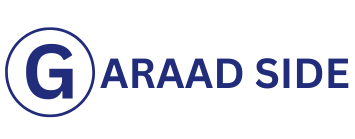Introduction: Mastering Money in the Modern World
Money touches every aspect of life — from education and housing to health care and retirement. Yet millions of people worldwide lack the basic knowledge to make informed financial decisions. In 2025, Financial Literacy has become a top priority for schools, businesses, and individuals alike.
This article explores what Financial Literacy is, why it matters more than ever, and how you can develop the money skills necessary to thrive in today’s economy.
Section 1: What Is Financial Literacy?
Financial Literacy is the ability to understand and use financial skills such as budgeting, saving, investing, and managing debt. It empowers individuals to make informed and effective decisions with their financial resources.
Core Components of Financial Literacy:
- Budgeting: Creating and managing a spending plan.
- Saving: Setting aside money for emergencies and goals.
- Investing: Growing your wealth over time through stocks, bonds, and other assets.
- Credit Management: Understanding credit scores, loans, and interest rates.
- Risk Management: Using insurance and diversification to protect assets.
- Digital Finance Skills: Using apps, online banking, and fintech platforms safely.
Section 2: Why Financial Literacy Matters in 2025
- Economic Uncertainty:
Global inflation, changing job markets, and digital currencies require informed decisions. - Student Loans and Debt:
Young adults face unprecedented debt loads and need tools to manage them. - Rise of Digital Finance:
Cryptocurrencies, online investing apps, and mobile payments demand new skills. - Longer Lifespans:
Planning for retirement and healthcare requires financial foresight. - Entrepreneurship Boom:
Small businesses and freelancers need strong money management skills.
Section 3: Benefits of Financial Literacy
1. Financial Security
Knowing how to save and invest builds long-term security.
2. Reduced Stress
A clear understanding of your finances alleviates money-related anxiety.
3. Better Decision-Making
Financially literate individuals can compare products, interest rates, and fees effectively.
4. Freedom and Flexibility
Good money management opens opportunities for travel, education, and investments.
5. Wealth Creation
Strategic investing and informed choices accelerate wealth building.
Section 4: Essential Financial Skills for 2025
1. Budgeting and Expense Tracking
Use digital tools like Mint, YNAB (You Need A Budget), or Google Sheets to monitor cash flow.
2. Saving for Emergencies
Establish a 3–6 month emergency fund to handle unexpected expenses.
3. Investing in the Stock Market
Learn index funds, ETFs, and risk tolerance to grow wealth over time.
4. Understanding Credit and Loans
Know your credit score, pay debts on time, and avoid high-interest borrowing.
5. Retirement Planning
Start early with pension plans, 401(k)s, or IRAs to take advantage of compound growth.
6. Digital Finance and Cybersecurity
Stay safe with strong passwords, two-factor authentication, and secure apps.
Section 5: Financial Literacy for Students and Young Adults
1. Student Loan Management
Understand interest rates, grace periods, and repayment options.
2. Building Credit Early
Use a secured credit card or become an authorized user to build a positive history.
3. Saving While Studying
Set up automated savings from part-time income.
4. Side Hustles and Freelancing
Learn basic tax rules, invoice tracking, and budgeting for irregular income.
Section 6: Financial Literacy in Schools and Communities
- Curriculum Integration: Many schools now include personal finance classes.
- Community Programs: NGOs and banks provide free workshops on budgeting and credit.
- Online Resources: Platforms like Coursera, Udemy, and Khan Academy offer finance courses.
- Youth Programs: Junior Achievement and similar initiatives teach entrepreneurship and money skills.
Section 7: Digital Finance Tools for Financial Literacy
Budgeting Apps:
Mint, PocketGuard, Goodbudget.
Investment Platforms:
Robinhood, Vanguard, Fidelity.
Savings Apps:
Acorns, Chime, or Digit for automatic saving.
Educational Resources:
Investopedia, NerdWallet, and YouTube finance educators.
These tools help people of all ages learn and apply financial literacy in real life.
Section 8: Common Financial Pitfalls and How to Avoid Them
- Living Paycheck to Paycheck: Build a buffer fund.
- High-Interest Debt: Pay off credit cards before investing.
- Impulse Spending: Use a 24-hour rule before major purchases.
- No Insurance Coverage: Protect your assets with adequate insurance.
- Lack of Diversification: Spread investments across asset classes to reduce risk.
Section 9: The Future of Financial Literacy Beyond 2025
Emerging trends include:
- AI Financial Advisors: Personalized budgeting and investing recommendations.
- Blockchain and Decentralized Finance: New opportunities and risks in crypto markets.
- Gamified Money Education: Apps that teach finance through challenges and rewards.
- Global Access: Microlearning apps bringing financial literacy to underserved populations.
- Sustainable Finance: Investing with environmental, social, and governance (ESG) factors in mind.
Section 10: How to Improve Your Financial Literacy Today
- Read Personal Finance Books: Start with classics like Rich Dad Poor Dad or The Millionaire Next Door.
- Take Free Courses: Google Digital Garage or Khan Academy finance sections.
- Practice with a Budget: Even a simple spreadsheet builds awareness.
- Join Online Communities: Reddit’s r/personalfinance or Facebook finance groups.
- Set Clear Goals: Short-term (vacation), medium-term (buying a car), and long-term (retirement).
Conclusion: Mastering Financial Literacy in 2025
Financial Literacy is more than a trend — it’s a life skill that empowers individuals to make smart choices about money, avoid debt traps, and build a secure future. In 2025, being financially literate is essential for navigating an economy driven by technology, digital finance, and global change.
By embracing Financial Literacy, you take control of your future, reduce stress, and open doors to opportunities that were once out of reach.

